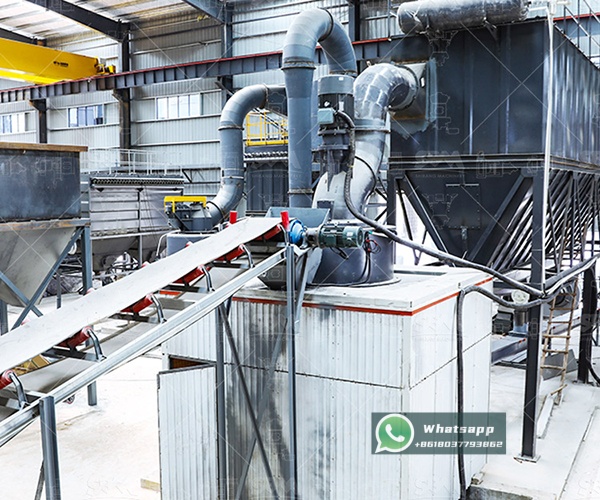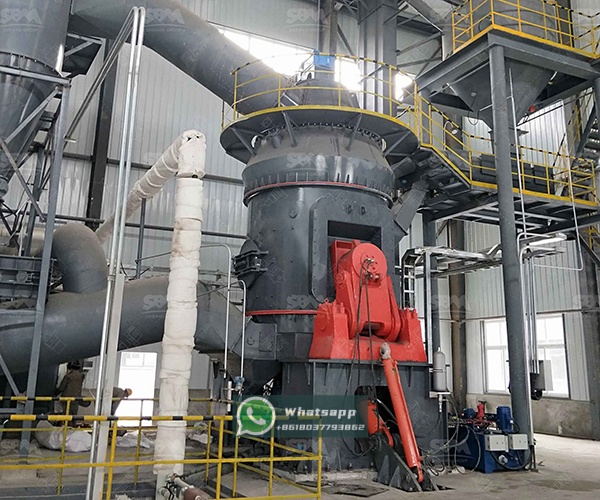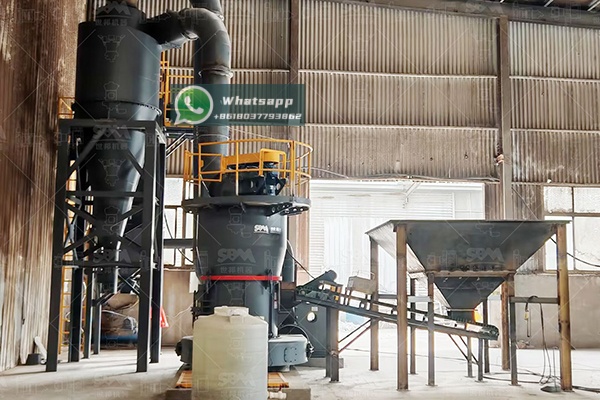The demand for high-purity, ultrafine talc has surged in recent years, particularly within the advanced catalyst and ceramic substrate industries. These sectors require materials with exceptional chemical stability, controlled particle size distribution, and superior surface properties to enhance performance in applications ranging from automotive catalytic converters to sophisticated electronic components. Achieving the necessary fineness and purity levels presents significant challenges that can only be overcome with specialized grinding technology.
In catalyst manufacturing, talc serves as both a functional filler and a carrier material. Its lamellar structure provides excellent thermal stability and chemical inertness, making it ideal for supporting active catalytic components. For ceramic substrates, particularly in electronic applications, ultrafine talc contributes to improved dielectric properties, reduced sintering temperatures, and enhanced mechanical strength. The performance of these advanced materials is directly correlated with talc particle size, distribution, and morphology—parameters that conventional grinding equipment struggles to control precisely.

Traditional grinding methods often introduce contaminants, create irregular particle shapes, or fail to achieve the narrow size distributions required. Furthermore, excessive heat generation during milling can degrade talc’s crystalline structure, diminishing its valuable properties. These limitations have driven the development of specialized grinding solutions capable of producing talc powders with D97 values below 10 microns while maintaining chemical purity and crystalline integrity.
Producing talc suitable for catalyst and ceramic substrates involves overcoming several technical hurdles. The soft nature of talc (1-1.5 on Mohs scale) makes it prone to overgrinding, which can destroy its platelet structure and reduce performance benefits. Additionally, talc’s inherent hydrophobicity creates challenges in material handling and dispersion. Moisture control is critical, as excessive water content can lead to agglomeration and processing difficulties.
The ideal grinding system for ultrafine talc must provide:
Shanghai Zenith Machinery Co., Ltd., as an excellent manufacturer of ore grinding equipment in China, has made significant achievements in the field of ultra-fine powder grinding. Our specialized research, development, and production of industrial powder grinding equipment has yielded several solutions ideally suited for producing high-quality ultrafine talc.
For applications requiring the highest levels of fineness and uniformity, the LUM Ultrafine Vertical Mill represents the pinnacle of grinding technology. This system integrates grinding, drying, classifying, and transportation functions while occupying minimal space. Its intelligent control system ensures consistent product quality and facilitates maintenance operations.
The LUM series is particularly effective for talc processing due to its gentle grinding action, which preserves the mineral’s lamellar structure while achieving exceptional fineness. The integrated classification system ensures tight particle size distribution, critical for both catalyst carriers and ceramic substrates.
| Model | Main machine power (kW) | Capacity (t/h) | Size distribution D97 (μm) |
|---|---|---|---|
| LUM1525 | 220-250 | 1.6-11.5 | 5-30 |
| LUM1632 | 280-315 | 2.0-13.5 | 5-30 |
| LUM1836 | 355-400 | 2.3-15 | 5-30 |

For operations requiring flexibility across different product specifications, the XZM Ultrafine Grinding Mill offers outstanding performance. This mill is widely used for superfine powder production and can achieve output fineness ranging from 325 to 2500 mesh, making it suitable for various grades of talc products.
The XZM series excels in processing soft to medium-hard materials with moisture content below 6%, perfectly matching talc’s characteristics. Its robust construction and efficient design ensure reliable operation with minimal maintenance requirements.
| Model | Working diameter (mm) | Max feed size (mm) | Final size (mesh) | Output (kg/h) | Main motor power (kW) |
|---|---|---|---|---|---|
| XZM221 | Φ800 | ≤20 | 325-2500 | 500-4500 | 75 |
| XZM268 | Φ1680 | ≤20 | 325-2500 | 5000-25000 | 315 |
The choice between grinding systems depends largely on the specific requirements of the end application. For catalyst substrates, where high surface area and controlled porosity are critical, the LUM Ultrafine Vertical Mill provides superior results. Its advanced classification system ensures that talc particles maintain their platelet morphology, creating ideal surfaces for catalyst impregnation.
For ceramic substrates, particularly in multilayer capacitor applications, the narrow particle size distribution achieved by the XZM Ultrafine Grinding Mill contributes to improved packing density and sintering behavior. The ability to precisely control fineness allows manufacturers to optimize the trade-off between mechanical strength and dielectric properties.

Beyond technical performance, economic factors play a crucial role in equipment selection. Both the LUM and XZM series offer significant advantages in energy efficiency compared to conventional grinding systems. The vertical design of these mills reduces energy consumption by 30-50% compared to traditional ball mills, while their compact footprints minimize facility requirements.
Operational efficiency is further enhanced through intelligent control systems that automate critical parameters such as feed rate, grinding pressure, and classification speed. This not only ensures consistent product quality but also reduces labor requirements and operator dependency.
The evolving requirements of the catalyst and ceramic industries continue to drive innovation in talc processing technology. Emerging applications in lithium-ion battery separators and advanced composite materials demand even finer particle sizes and more precise morphological control. Shanghai Zenith Machinery remains at the forefront of these developments, continuously refining our grinding technologies to meet tomorrow’s challenges.
Recent advancements in classifier technology have enabled even tighter particle size distributions, while improved wear-resistant materials extend equipment lifespan when processing abrasive contaminants sometimes present in talc deposits. The integration of Industry 4.0 principles allows for predictive maintenance and real-time optimization of grinding parameters based on raw material variations.
The production of ultrafine talc for catalyst and ceramic substrate applications requires sophisticated grinding technology that balances fineness, particle morphology, and economic viability. Shanghai Zenith Machinery’s LUM Ultrafine Vertical Mill and XZM Ultrafine Grinding Mill represent optimal solutions for these demanding applications, offering precise control over critical parameters while maintaining operational efficiency.
As industry requirements continue to evolve, our commitment to research and development ensures that we remain capable of meeting the most stringent specifications for ultrafine talc production. Through continuous innovation and customer-focused engineering, we provide the grinding solutions that enable advancements in catalyst and ceramic technologies across multiple industries.